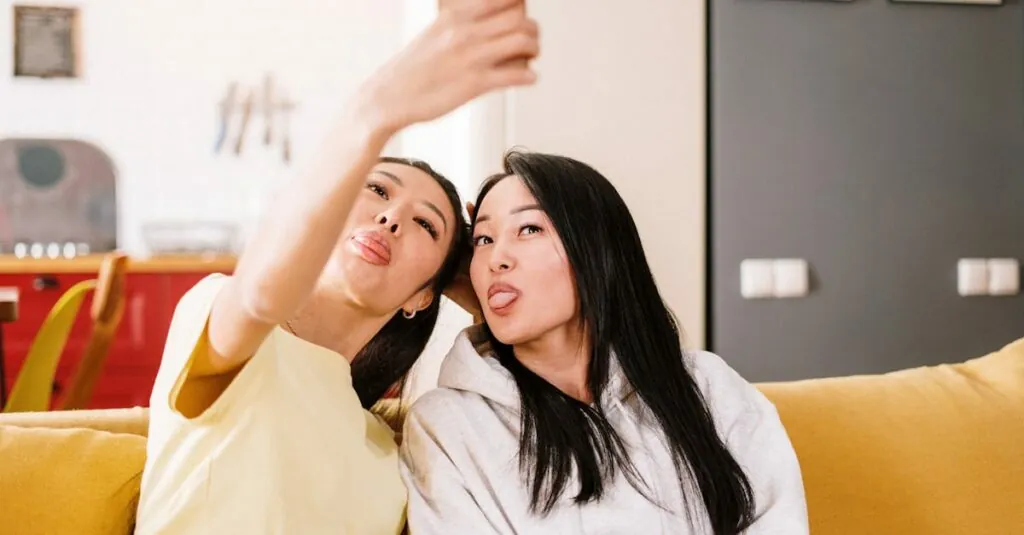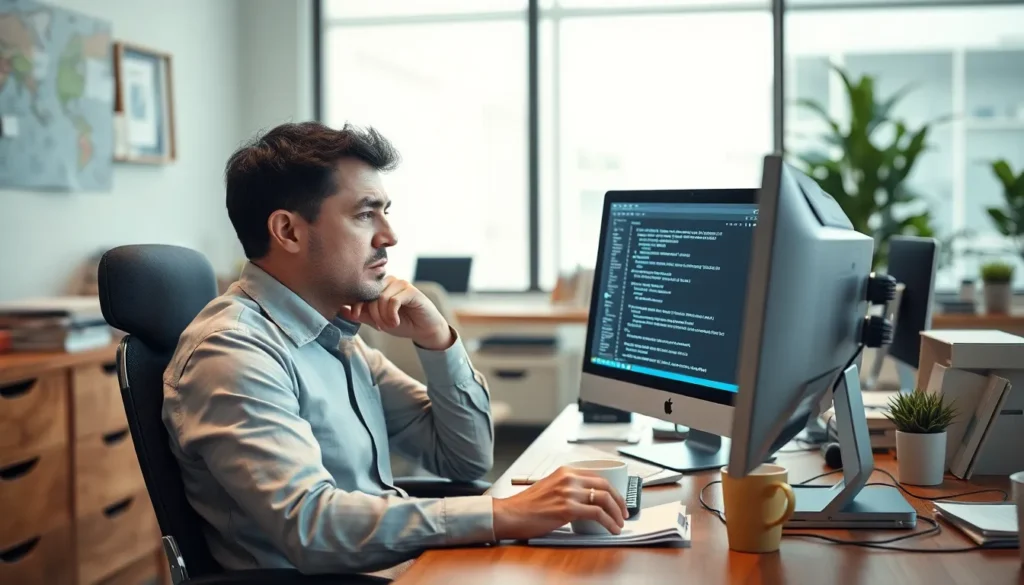Table of Contents
ToggleIn a world where privacy feels like a luxury, hiding pictures on an iPhone is a skill worth mastering. Whether it’s those embarrassing selfies from last weekend or top-secret vacation plans, sometimes it’s best to keep certain images under wraps. Fear not, as this guide will turn you into a digital ninja, stealthily concealing your photos from prying eyes.
Imagine being able to scroll through your camera roll without the fear of someone stumbling upon that questionable photo from last year’s party. With a few simple tricks, you can protect your precious memories while keeping your gallery looking pristine. So grab your iPhone and get ready to unlock the secrets of photo hiding—because who doesn’t want a little mystery in their life?
Understanding Privacy on iPhone
Privacy on an iPhone serves as a crucial aspect of digital security. Users often seek ways to protect their personal images from prying eyes. Distinct categories of photos, such as sensitive work documents or personal moments, often require extra caution.
Storing images in a secure manner ensures confidential information remains private. Apple offers various features to enhance user privacy, enabling individuals to manage their photo collections effectively. Understanding settings such as the Hidden album feature allows users to conceal selected images within their libraries.
Utilizing Face ID or Touch ID adds an additional layer of security, making access to hidden photos more restricted. Users can also take advantage of third-party apps designed for secure image storage. Selecting the right app involves examining user ratings and privacy policies to ensure safety.
Knowing how to create backups can further protect memories, as it enables users to restore images if needed. Regularly updating privacy settings guarantees that the latest features help in safeguarding personal data.
Considering multiple storage options, some prefer cloud services, while others opt for local storage solutions. Both methods have distinct advantages, but prioritizing security over convenience remains essential. By adopting these practices, users can create a safer environment for their pictures on an iPhone while enjoying peace of mind and privacy.
Native Method to Hide Pictures
Hiding pictures on an iPhone involves using built-in features for privacy. An effective option is the Photos app, which provides a straightforward way to conceal images.
Using the Photos App
Photos app serves as the primary tool for managing images on an iPhone. Users can leverage the Hidden album feature to secure their photos. This method keeps selected images separate from the main gallery, ensuring unwanted viewers cannot access them easily. Photos remain in the Hidden album until users choose to restore them to the main gallery.
Steps to Hide Photos
- Open Photos app and navigate to the desired image.
- Tap “Share” icon, appearing as a square with an arrow.
- Select “Hide” from the list of options.
- Confirm the action by tapping “Hide Photo.”
Following these steps effectively conceals images, providing an organized and secure gallery.
Utilizing Third-Party Apps
Third-party apps offer additional options for hiding pictures on an iPhone. Many users appreciate the variety of features these apps provide, often enhancing privacy and security.
Recommended Apps for Hiding Pictures
Private Photo Vault stores images behind a secure passcode, providing users with customized albums. Secret Photo Vault also features a user-friendly interface, allowing efficient image management while maintaining privacy. Keepsafe Photo Vault encrypts files and offers backup options, ensuring user data is secure against breaches. Gallery Vault provides a unique steganography feature, which conceals images within other files like audio. These apps enhance photo hiding capabilities and cater to various user needs.
Pros and Cons of Third-Party Solutions
Pros of third-party apps include advanced features not available in native iPhone settings. Some apps encrypt photos, providing an extra layer of security. App interfaces often simplify the hiding process, making it user-friendly. However, users may face potential cons, such as app fees and the risk of data breaches. Not all apps guarantee privacy, so reviewing user ratings and privacy policies becomes essential. Ultimately, confidence in an app’s security is critical when choosing a third-party solution.
Other Privacy Features on iPhone
Privacy features on the iPhone enhance the security of personal information. Users can take advantage of various tools to keep their images concealed.
Locking Photos with Passwords
Locking photos with passwords adds an extra layer of security. Certain apps, designed for photo storage, allow users to set a password for protected access. This means that only those who know the password can view the hidden images. Utilizing a combination of a password and other app features ensures private photos remain inaccessible to unauthorized users. Password protection helps maintain the confidentiality of sensitive content, keeping personal moments secure from prying eyes.
Using Face ID or Touch ID
Face ID or Touch ID provides convenient and secure access to the iPhone’s features. Users can enable Face ID or Touch ID to restrict access to the Hidden album within the Photos app. By doing this, access to hidden images becomes limited only to the device owner. These biometric authentication methods simplify the process of securing photos while ensuring that others cannot access them without the owner’s consent. Implementing Face ID or Touch ID enhances the overall privacy of photo galleries, making it a vital feature for maintaining confidentiality.
Hiding pictures on an iPhone is an essential skill for anyone wanting to maintain their privacy in a digital landscape. By utilizing built-in features like the Hidden album or exploring reliable third-party apps, users can effectively secure their personal images. With options for biometric authentication and password protection, it’s easier than ever to keep unwanted eyes away from cherished memories.
Prioritizing privacy not only enhances security but also allows for a more organized photo gallery. Embracing these methods empowers users to take control of their digital lives, ensuring that their most personal moments remain just that—personal.







